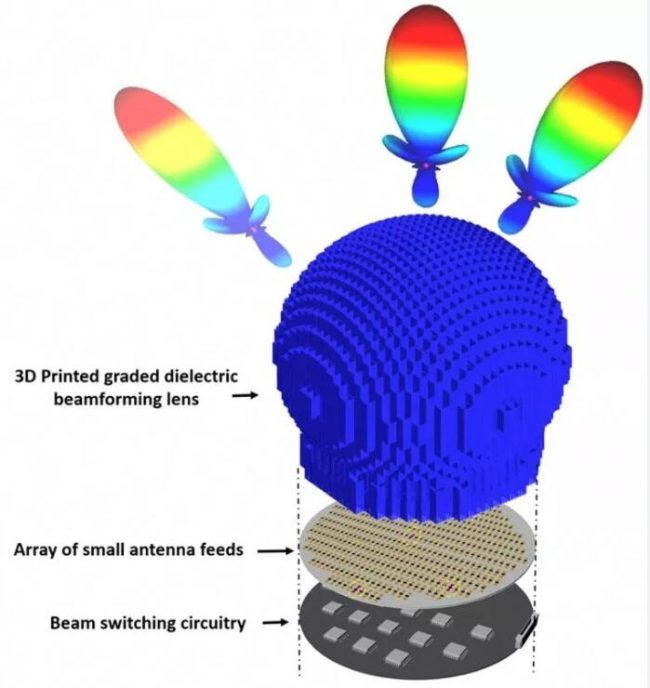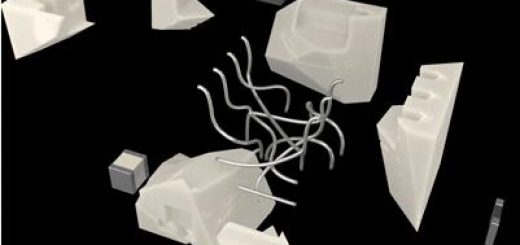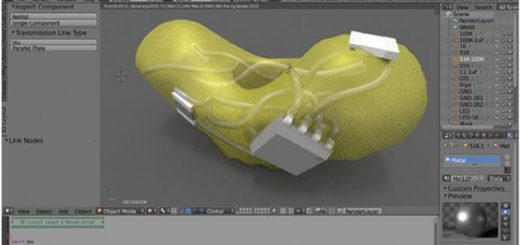Overcoming 5G Network Hurdles with 3D Printed Ceramic Antennas
The University of Delaware (UDEL) recently installed XJet’s Carmel 1400 additive manufacturing system, which it will use to 3D print ceramic antenna technology—called Passive Beam Steering—to unlock 5G network applications and more.

Within the still niche market of ceramic 3D printers, XJet’s NanoParticle Jetting (NPJ) technology is leading in applications. Its Carmel 1400 system has already been installed for use in various industries. Recently, for instance, medtech company Marvel MedTech installed the 3D printing technology to print ceramic components for a breast cancer prevention treatment.
At UDEL, the same hardware will be put to use for an entirely different application: for the creation of antennas for 5G networks. The Carmel 1400 AM system is reportedly well suited for the production of small, lightweight and cost-effective 5G antennas designed by engineers at UDEL.
![]() 5G network challenges
5G network challenges
Rolling out the 5G network has been challenging in general because its signals are more sensitive to objects and interference than 3G or 4G networks. This means that in order to implement the much faster 5G network, more antennas are needed to maintain connectivity. Existing antennas are too expensive to scale up for 5G, which has presented a big hurdle. The ability to 3D print cheaper but high performing antennas could therefore be game changing.
Prior to installing the XJet system, a research team led by Professor of Electrical Engineering Mark Mirotznik had developed a special software for designing 5G antennas. The trouble was, they had no way to manufacture the lens because of its complexity and strict material properties. XJet’s unique NPJ technology offered a viable solution to the team’s challenges.
“Discovering XJet NanoParticle Jetting was a real lightbulb moment for us,” explained Mirotznik. “In one stroke, it solved our previous frustration in achieving both the material characteristics combined with the geometric properties essential to our solution.
“NPJ is the only process capable of producing the inner walls of each channel with the accuracy and smoothness required to retain wave direction—but in ceramic. XJet’s ceramic is an isotropic, 100 percent density ceramic with the right dielectric constant, which does not ‘absorb’ and weaken signal. Quite literally, any tiny variation in tolerance could lead to diversion of the signal to the wrong place, and that couldn’t be afforded.”

![]() YSU support
YSU support
The research conducted at UDEL using the XJet Carmel 1400 system has been further supported by Youngstown State University (YSU) which investigated the matter using the same 3D printer. YSU found similar results in terms of density, isotropic properties and dielectric constants using XJet’s ceramic 3D printing technology.
“We carried out research to establish the nature and properties of XJet printed Zirconia. This suggested the crystal structure of the prints are nearly even; the dielectric constant is high while the loss tangent is low and are both similar to the value expected from a non-printed crystal,” said Professor Eric MacDonald, Friedman Chair for Manufacturing at YSU. “This high dielectric constant with low loss opens the potential for 3D printing of a variety of microwave devices including antennas, lenses, and filters. Two simple dielectric resonator antennas were demonstrated with the material, showing that the measured material properties can indeed be used for accurate design of such devices with electromagnetic simulation tools.”
“The University of Delaware’s application of NanoParticle Jetting technology for antennas is truly pioneering,” added Hanan Gothait, CEO of XJet. “5G is expected to bring about a true revolution in wireless technology, and with it the connectivity to support everything from autonomous vehicles and smart cities, to long-distance surgery, live-streaming virtual reality and the prospect of a limitless ‘Internet of Things.
“Clearly, to achieve that, the technology must be extraordinarily reliable, and we believe NPJ is ideally placed to deliver it. 5G antennas will need to be produced in the millions to deploy a successful, fully functioning 5G global network – and millions is exactly the kind of productivity this system has been designed for.”
Source: 3D Printing Media Network




Recent Comments